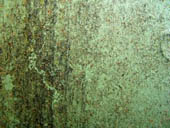
Purpose
To cultivate a living slime mold and observe the stages in which a slime mold forms.
Additional information
A slime mold is actually a unique form of protist, called physarum. A protist is a single-celled organism, which in the case of physarum, forms a unique mass that is remarkable to study. Slime molds are easily cultivated using materials obtained from a biological supply company.
Sponsored Links
Required materials
- Physarum culture (usually sold on small squares of filter paper for easy transport)
- Non-nutrient Petri dishes (choosing pre-made Petri dishes will speed up the experiment)
- Rolled oatmeal flakes
- Room temperature area that can be kept mostly dark
- Journal or logbook
- Camera (if available)
Estimated Experiment Time
A few days
Step-By-Step Procedure
- 1. Begin cultivating your slime mold by adding the Physarum on the filter paper to your Petri Dish.
- 2. Add an oatmeal flake or two, being careful not to add too much.
- 3. Place in a dark room for 12 hours.
- 4. Repeat steps two and three as slime mold grows.
Note
You may need an adult to help you find a company that sells the materials needed and purchase them for you. While you may not have access to a biological supply store in your area, you will most likely be able to find one on the Internet.
Observation
Observation during this experiment is one of the most important factors. Each day as your slime mold grows, record your slime mold’s progress in detail in your journal and take pictures of it if you have a camera available. You will be quite surprised to learn that your slime mold will grow quite quickly if the conditions are right.
Result
The oatmeal flakes provide fuel and food for the Physarum cells to multiply. As the cells multiply, they begin to take shape and form a slime-like mass. The mass will continue to grow for as long as it has adequate food.
You can take this experiment one step further and record what happens to your slime mold in different conditions. What happens to the slime mold if you place it in the refrigerator for a day? Does it continue to grow? Is the growth slowed or the same? What about when you place the slime mold in warmer conditions? What happens if you cut the slime mold in half? Will it continue to grow, provided you continue to give it oatmeal flakes? Do you think the two halves of the cut slime mold will merge back together?
Cultivating your very own slime mold can be an extremely fun experiment and a great learning process.
Sponsored Links
Take a moment to visit our table of Periodic Elements page where you can get an in-depth view of all the elements,
complete with the industry first side-by-side element comparisons!